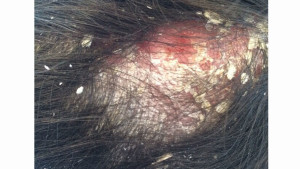Uncategorized
Symptoms and Causes of Seborrheic Keratosis You Should Know About
Seborrheic Keratosis is a one of the most common skin conditions where a person develops a warty rash on his or her skin. Although the rash is harmless, the skin develops a reddish colour with a swell and greasy outer appearance. The top layer of the rashes is often covered with whitish yellow crusty scale. The causes of Seborrheic Keratosis are not known, but it is quite similar in appearance to melanoma, a type of skin cancer. This is why it is always a good idea to consult a dermatologist in London, or in any part of the world you live so that he or she can have a look and provide appropriate treatment.
Risk Factors
Although the causes of Seborrheic Keratosis are not known, some people stand a higher chance of developing it than others.
- Old- Age – Adults over the age of 40 stand a higher chance of developing this skin disorder as compared to young people. Infants, too, may also develop a type of Seborrheic Keratosis called Cradle Cap. But apart from infants, any other young person stands an almost negligible chance of developing Seborrheic Keratosis.
- Genetic Reasons – Seborrheic Keratosis runs through families and if you have someone in your family who has developed this skin condition, there are high chances that you might, too. In other words, chances of developing Seborrheic Keratosis directly increase with the number of relatives having this skin condition.
- Frequent Exposure to Sun – Research studies point out that there are quite high chances that higher exposure to sun rays might be a cause of developing Seborrheic Keratosis in people. Therefore, try to avoid going out in the sun without applying a good sunscreen lotion on your body parts.
When to see a dermatologist?
Although Seborrheic Keratosis is completely harmless, a similar looking skin cancer called melanoma isn’t. It is, therefore, the best thing to consult a dermatologist for any recent changes in your skin, as you never know what it might be. You should consult a dermatologist when you notice any visible changes on your skin, including new growth. Also, if you notice any change in the appearance of any existing growth of your skin, it is the time you should see a dermatologist.

Quite often people develop a single growth and try to dismiss it as Seborrheic Keratosis. You should not ignore a single growth on your skin because Seborrheic Keratosis normally causes many growths, and is not characterised by single growth. Similarly, if the growth has an unusual colour, especially blue or purple, you should let a dermatologist check your skin because Seborrheic Keratosis normally causes reddish growth. Last but not the least, if you notice the growths having an irregular border, or if they are painful or cause irritation, you should immediately consult a dermatologist in London. Remember, it is always better to be safe than sorry.
You can also get in touch with HP Dermatology Centre specialists today and get personalised advice for Seborrheic Keratosis treatment – we’re just a call away!

